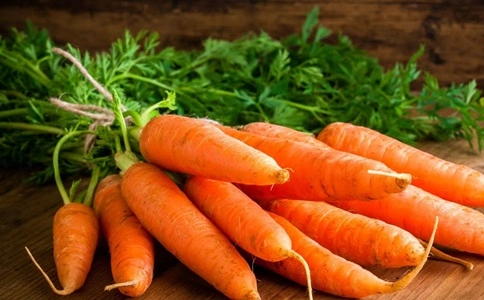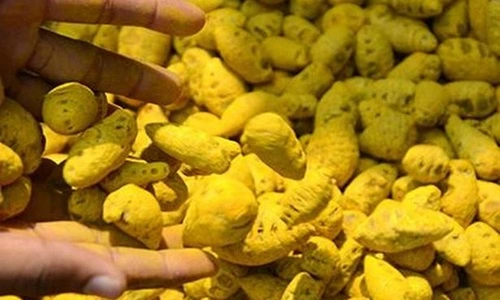Carrots are one of the most popular and nutritious root vegetables grown in India. Known for their sweet flavor, crunchy texture, and high nutritional value, carrots are rich in beta-carotene (vitamin A), fiber, antioxidants, potassium, and other essential nutrients. They play a significant role in improving eye health, boosting immunity, and promoting overall wellness.
Carrots are grown in a variety of climates and soils, making them suitable for cultivation across the country. The primary carrot-producing states in India include Punjab, Haryana, Uttar Pradesh, Rajasthan, Maharashtra, Karnataka, Tamil Nadu, and West Bengal. Different varieties of carrots are grown depending on climate, purpose (table or processing), root color, and maturity duration.
This article highlights more than 10 top carrot varieties in India, their characteristics, and suitability for Indian conditions.

1. Pusa Rudhira
Pusa Rudhira is a widely grown variety developed by the Indian Agricultural Research Institute (IARI), New Delhi.
- Root Color: Deep red
- Maturity: 90–100 days
- Root Length: 20–25 cm
- Regions: Uttar Pradesh, Punjab, Haryana
- Characteristics:
- High beta-carotene content
- Cylindrical, smooth, and sweet roots
- Tolerant to mild frost conditions
- Uses: Table variety, juice production
2. Nantes
Nantes is a popular orange carrot variety grown for its high-quality roots and smooth texture.
- Root Color: Orange
- Maturity: 100–110 days
- Root Length: 15–20 cm
- Regions: Maharashtra, Karnataka, Tamil Nadu
- Characteristics:
- Cylindrical roots with a blunt tip
- Sweet and tender flesh
- High resistance to cracking
- Uses: Fresh consumption, salads, and soups
3. Pusa Kesar
Pusa Kesar is a high-yielding red carrot variety developed for Indian climatic conditions.
- Root Color: Red
- Maturity: 100–120 days
- Root Length: 20–25 cm
- Regions: Punjab, Haryana, Uttar Pradesh
- Characteristics:
- Smooth roots with a deep red color
- Rich in beta-carotene and lycopene
- Highly preferred for winter cultivation
- Uses: Fresh eating, juice, and halwa production
4. Early Nantes
Early Nantes is an early-maturing orange carrot variety grown for fresh market demand.
- Root Color: Orange
- Maturity: 80–90 days
- Root Length: 15–18 cm
- Regions: Karnataka, Maharashtra, Tamil Nadu
- Characteristics:
- Cylindrical roots with a uniform shape
- High market value due to early harvesting
- Suitable for warmer climates
- Uses: Fresh consumption and salads
5. Punjab Carrot Red
Punjab Carrot Red is a high-yielding winter variety cultivated for its attractive deep red roots.
- Root Color: Deep red
- Maturity: 90–100 days
- Root Length: 20–22 cm
- Regions: Punjab, Haryana, Uttar Pradesh
- Characteristics:
- Sweet flavor with smooth and uniform roots
- Tolerant to low temperatures
- Uses: Table variety, juice, and culinary preparations
6. Kuroda
Kuroda is a widely grown orange carrot variety known for its large roots and sweet taste.
- Root Color: Orange
- Maturity: 90–100 days
- Root Length: 18–22 cm
- Regions: Maharashtra, Karnataka, Tamil Nadu
- Characteristics:
- High-yielding variety with uniform roots
- Sweet and crunchy flesh, resistant to splitting
- Uses: Fresh consumption, juicing, and cooking
7. Pusa Meghali
Pusa Meghali is a short-duration variety ideal for early sowing in mild winters.
- Root Color: Orange
- Maturity: 80–90 days
- Root Length: 15–18 cm
- Regions: Tamil Nadu, Karnataka, Maharashtra
- Characteristics:
- Uniform roots with a sweet flavor
- Suitable for early harvesting in tropical climates
- Uses: Table variety, salads
8. Black Carrot (Desi)
Black carrots are traditionally grown for their unique dark purple-black roots, rich in anthocyanins.
- Root Color: Dark purple to black
- Maturity: 100–110 days
- Root Length: 18–20 cm
- Regions: Punjab, Uttar Pradesh, Rajasthan
- Characteristics:
- High antioxidant content (anthocyanins)
- Firm, dense roots with a slightly sweet flavor
- Uses: Kanji (fermented drink), juice, and culinary uses
9. Pusa Yamdagni
Pusa Yamdagni is a high-yielding variety developed for late winter cultivation.
- Root Color: Deep red
- Maturity: 100–110 days
- Root Length: 22–25 cm
- Regions: Haryana, Punjab, Uttar Pradesh
- Characteristics:
- Smooth roots with high beta-carotene content
- Tolerant to frost conditions
- Uses: Table variety, juice, and halwa production
10. Hisar Gairic
Hisar Gairic is a variety developed for semi-arid regions, known for its drought tolerance.
- Root Color: Red
- Maturity: 90–100 days
- Root Length: 20–25 cm
- Regions: Haryana, Rajasthan
- Characteristics:
- Uniform root shape with a rich red color
- Suitable for cultivation in dry climates
- Uses: Table variety, juice, and cooking
FAQs
Q1: Which carrot variety is best for juice production?
A: Pusa Kesar, Pusa Rudhira, and Black Carrot (Desi) are ideal for juice production due to their rich color and sweet flavor.
Q2: Which carrot variety grows best in winter?
A: Varieties like Punjab Carrot Red, Pusa Kesar, and Pusa Yamdagni are well-suited for winter cultivation.
Q3: What is the difference between red and orange carrots?
A: Red carrots are rich in beta-carotene and lycopene, while orange carrots are high in beta-carotene and have a slightly milder flavor.
Q4: Which carrot variety is ideal for early harvesting?
A: Early Nantes, Pusa Meghali, and Pusa Rudhira are suitable for early harvesting in mild climates.
Q5: What regions in India are best for carrot cultivation?
A: Carrots are primarily grown in Punjab, Haryana, Uttar Pradesh, Maharashtra, Tamil Nadu, and Karnataka due to favorable climates and soil conditions.
Conclusion
Carrots are a versatile and profitable crop for Indian farmers, offering varieties like Pusa Rudhira, Nantes, Pusa Kesar, and Black Carrot that cater to different purposes—fresh consumption, processing, and juicing. With advancements in agriculture, farmers can select high-yielding, disease-resistant, and climate-adaptable varieties to ensure better productivity and profitability in carrot cultivation.

